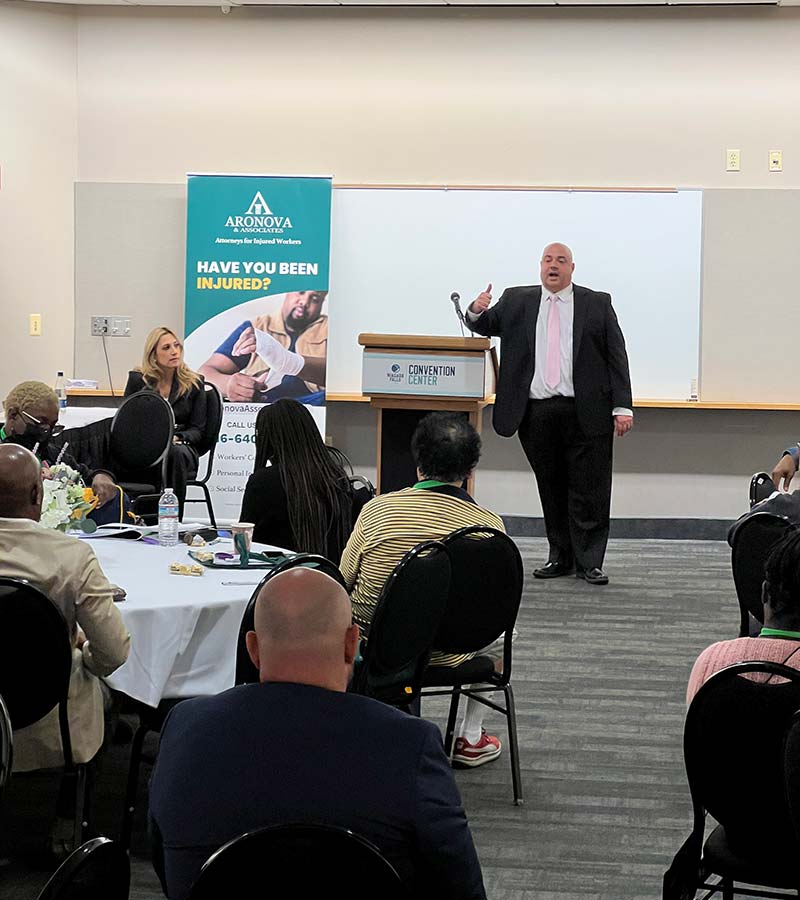5 Most Dangerous Jobs on a Construction Site

5 Most Dangerous Jobs on a Construction Site
Construction site safety has increased exponentially over the past seventy-five years. Notwithstanding those improvements, construction workers experience a disproportionately high number of workplace injuries and fatalities.
The first step toward improving safety at a construction site is to identify the highest risk jobs and to raise awareness among the men and women who perform those jobs. The NYC construction accident attorneys at Aronova & Associates have represented workers in Manhattan, Nassau County, and throughout the five boroughs & Long Island for many years. Our experience and reports from government work-safety regulatory bodies consistently show that five jobs at every construction site expose workers’ to the highest risk of injury.
Jobs that place a worker at a high elevation
Any construction job that requires workers to perform tasks at elevations, including construction of high-rise buildings, roofing, and exterior masonry above a ground floor, exposes those workers to injuries from falls due to weak safety harnesses or improper use of those harnesses. Further, a dropped tool or a falling piece of material can strike and injure workers that are on the ground below a work area.
Working with high-voltage or high-power electrical lines and equipment
One misstep with overhead power lines, cable harnesses, transformers, and circuit assemblies can kill or maim a construction worker in a split second. Electricians have the training and knowledge to reduce those risks, but other workers around a construction job site may not have the same level of awareness. OSHA standards require employers to teach all employees to recognize and avoid dangerous electrical conditions at all constriction job sites.
Working with heavy equipment
Heavy equipment operators are usually shielded in reinforced cages, but workers near that equipment face a heightened risk of injury. Even with backup alarms and other systems that alert workers of equipment movement, those warning sounds can get lost amidst the noise and level of activity at a construction site. Workers can suffer injuries by getting pinned between a moving piece of equipment and a fixed object, or by being struck by construction materials that are being manipulated by the equipment.
Working in tight or confined spaces
Confined spaces include, for example, narrow culverts that can collapse if they are not properly stabilized, poorly-ventilated storage tanks, and small building enclosures that can trap a worker when construction materials shift or equipment blocks entrances. Construction sites should be managed to allow proper egress from tight spaces at all times and to provide good ventilation and air supplies to enclosed tanks.
Demolition jobs
Demolition jobs combine all of the high risk construction site jobs into a single category. Large structures that are being demolished can require workers to perform functions at high elevations. Those structures might have old electrical wires or systems that, when exposed, can create electrical shock risks. Demolition experts routinely use heavy equipment, and find themselves in confined areas with greater-than normal dust levels. In addition, demolition jobs on older structures can expose workers to hazardous materials, such as asbestos or carcinogenic chemicals, all of which require special training for safe disposal.
New York Construction Accident Lawyers: Aronova & Associates
The attorneys at Aronova & Associates appreciate the construction site safety procedures that have been implemented over the past several years to keep workers safe. When construction workers suffer injuries due to inadequate safety procedures or exposure to inherently risky situations, they should get the compensation they need for rehabilitation from those injuries and lost wages. Call Aronova & Associates today to speak with one of our construction accident lawyers. All initial consultations are free of charge.
Subscribe for our monthly Newsletter! Receive insights, views from the experts right in your inbox.
Contact Us
Ready to Work For You
Aronova & Associates is a firm for all New Yorkers. We are your trusted legal support when it matters most. Our team provides multilingual, tailored guidance to meet the diverse needs of New Yorkers. The first step in providing you with the help you need is a free consultation to discuss your case. When you’re ready to talk, we’re ready to work for you.
- 24 / 7
We Offer Legal Representation In:
- Spanish
- Russian
- Korean
- Hindi
- Gujarati
- Punjabi
- Urdu
- Turkish
